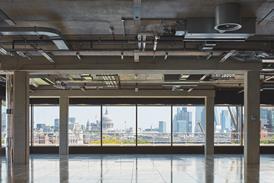- News

All the latest updates on building safety reformRegulations latest
- Focus
- Home
- News
- Focus
- Comment
- Events
- CPD
- Building the Future
- Jobs
- Data
- Subscribe
- Building Boardroom
Top 150 Consultants 2021 – a world of change
By Dave Rogers2021-10-15T05:00:00

As Building’s Top 150 ranks the industry’s consultants once again, after a covid break last year, it’s clear the world in which they operate has changed for good. Dave Rogers reports
“We need a sustained period of boredom. Boris always seems to be fighting something.” Alinea Consulting founding partner Iain Parker is speaking days after dire warnings were made about a couple of fertiliser plants in Cheshire and Teesside shutting down because of soaring energy costs. Up to that point, most would have been forgiven for thinking: “So what?”
Well, it turns out that they produce rather a lot of carbon dioxide, a gas that provides the fizz in a can of pop or beer, sedates pigs before they’re slaughtered to become pork chops and bacon sandwiches, vacuum-packs foodstuffs like bread, meat and salads, refrigerates products and is even used by surgeons during operations. In other words, a shortage of the gas affects our day-to-day lives considerably.
Read more…
This is PREMIUM content, available to subscribers only
You are not currently logged in. Subscribers may LOGIN here.
SUBSCRIBE to access this story

SUBSCRIBE for UNLIMITED access to news and premium content
A subscription will provide access to the latest industry news, expert analysis & comment from industry leaders, data and research - including our popular annual league tables. You will receive:
- Print/digital issues delivered to your door/inbox
- Unlimited access to building.co.uk including our archive
- Print/digital supplements
- Newsletters - unlimited access to the stories behind the headlines
Subscribe now
Get access to premium content subscribe today


















